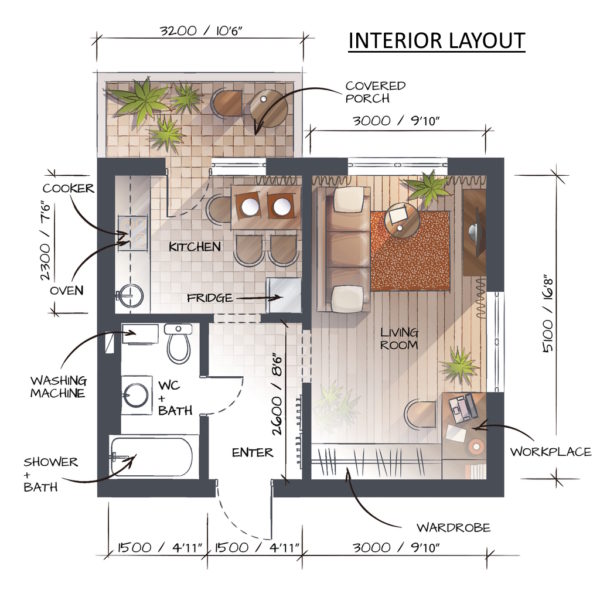What Is the Difference Between Interior Design and Interior Architecture?
Some people think interior design and interior architecture are the same profession, and many use the phrases interchangeably. They are not the same. The service provision by interior designers differs (in ways) from those of interior architects. However, one thing is the two are closely related, are part of the same industry, and are within the same niche.
If you intend to employ the services of a designer but are unsure whether you need one or the other, this article will give a clearer picture of what to expect and know which one is relevant to your project. And, if you plan to study interior design but wish to research interior architecture, this article will help you make a better and more informed decision on the path to take.

Interior Design Services
Interior design services go beyond what an interior decorator can offer. Interior designers not only do what decorators can offer, they also go way beyond just decorating and beautifying an interior space.
Some aspects of the profession are technical, so being proficient with simple CAD software programs like 3D Home Design and RoomSketcher are added advantages, but they are not mandatory.
Providing interior design services involves explicit communication and implementation of design concepts through sketches, plan layouts, working drawings, specifications, schedules, mood boards, etc.
Tasks Done by Interior Designers
- Consultation services.
- Space planning.
- Production of floor plans, elevations, 3D illustrations, and working drawings to create a set of blueprints
- Lighting design.
- Design and build. These include interior construction works, kitchen design and build, storage solutions, and bathroom and bedroom designs.
- Co-ordinating colour schemes.
- Custom furniture designs.
- Residential and commercial design services.
While some interior designers work strictly in specialized niches, others work on uncomplicated commercial projects like interior styling in hotels, offices, and restaurants. Interior designers can also provide services for large architectural firms ready to pay hefty salaries.

Interior Architecture Services
As we know, interior architecture and interior design are grouped under and loosely referred to as interior design. But, interior architects take on more complex tasks than interior designers.
Interior architecture covers design analysis and interior construction, a good knowledge of building regulations, and an understanding of the structure of buildings.
Areas of Specialization
- Art of design
- Industrial design
- Science of architecture
Interior architects can gut or strip the inside of an existing structure and then rebuild it to accommodate a different purpose. For instance, an old office block can be renovated and converted into a block of modern apartments. And though the building may retain its existing exterior design, the transformation of its interior may be a thing of great beauty. This is an adaptive reuse of a building’s shell.
Working as an interior architect is more challenging than providing interior design services. It requires a high level of skill and the ability to work on complex projects, keep to tight deadlines, and communicate with consultants, builders, technicians, contractors, and difficult clients with deep pockets.
Summary - Between Interior Architects and Interior Designers
Deep knowledge and technical ability make one different from the other. So, if you aspire to become a part of this lucrative profession and are technically inclined to a fair degree, you can decide to study interior design. However, with good technical and architectural skills, aside from being highly creative, you can opt to become an interior architect.
And even though the interior design profession has been around much longer than interior architecture, interest in the latter has grown in recent years.
With all the new materials like environmentally friendly resources, the ‘green design’ movement, new techniques, and recent technologies like architectural glass ceilings, floors, and walls, including new technologies for heating and lighting, interior designers and interior architects have found exciting new ways to plan and design interior spaces advantageous to humans who have to live and interact within boundaries of a building’s shell.